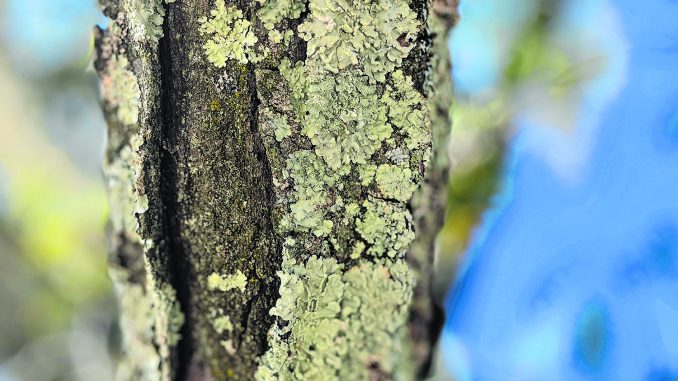
Once upon a time, my street used to be loaded with towering, shade-providing tall trees. It was a gorgeous tree-lined street, similar to the reputable Tree City USA award-winning streets throughout Floral Park. Neighboring homeowners, mostly innocently misinformed about ecology and tree health in general, would call the village and public works department and complain and bellyache about the “rotting” trees on the avenue.
In mid-block Saturday morning meetings with other neighbors, you could hear the cries, “There’s green mold growing from the base of the trunk to the highest branches,” or “These trees are all rotted and one could come crashing through my home during the next Nor’easter because of it” or “I wish they would take all of these trees down, they all have green gunk.”
Public works would come, investigate the tree, determine that the trees were not rotting and close the trouble ticket, report unfounded and rightly so. More complaints from homeowners, more hassle and finally one by one, the majority of trees on the block all came down throughout the years, save for maybe two or three that remain today.
That green gunk, it’s called lichens, not mold, not tree rot. Lichens are remarkable, symbiotic organisms that consist of a partnership between a fungus and a photosynthetic partner, often an algae. These organisms play a vital role in various ecosystems, and their presence offers a multitude of benefits to trees. Lichens are often seen growing on the bark of trees, and while they might seem like a threatening addition, they actually provide significant advantages for the health and well-being of trees.
Lichens are excellent indicators of air quality. Their sensitivity to environmental conditions and pollutants makes them valuable indicators of air pollution levels. When lichens are abundant and thriving on tree bark, it’s a sign of clean and healthy air. In areas where lichens are scarce or absent, it may indicate air pollution problems. Trees with lichens can serve as sentinels for monitoring air quality, helping us identify and address pollution concerns.
Certain lichens, particularly those with algae, have the ability to fix atmospheric nitrogen. They convert atmospheric nitrogen gas into a form that can be taken up by plants and trees as a nutrient. This nitrogen fixation provides trees with an additional source of nitrogen, an essential element for their growth and development. In nitrogen-deficient soils, lichens act as natural fertilizers for trees.
Lichens can help retain moisture on tree bark. Their structure allows them to capture and hold water, which benefits trees, especially in arid or drought-prone regions. Lichens act as a natural moisture reservoir, offering a source of hydration to the tree when water is limited.
Lichens can provide insulation to trees, helping to moderate temperature fluctuations. In extreme heat, they can shield the tree’s bark from direct sunlight, reducing the risk of sunscald, which can cause bark damage. In colder weather, lichens can help insulate the bark and minimize temperature extremes, protecting the tree from freezing conditions.
Lichens form a protective layer on tree bark that shields it from environmental stressors.
This layer acts as a barrier against wind, rain, and physical damage, helping to preserve the tree’s bark and overall health. By preventing water and wind erosion, lichens can maintain the integrity of the tree’s outer layers.
Lichens are photosynthetic organisms, and their activity contributes to increased oxygen production and carbon dioxide absorption in the immediate vicinity of the tree. This can improve the local microenvironment for the tree, potentially leading to increased photosynthetic rates and growth.
The structure of lichens provides a suitable microenvironment for microorganisms, including beneficial fungi and bacteria. These microorganisms can have positive interactions with the tree, contributing to its health by enhancing nutrient availability and helping to suppress harmful pathogens.
Lichens can enhance the aesthetic value of trees and the natural landscape. Their intricate and diverse forms, colors, and textures add visual interest to forests, woodlands, and urban green spaces. For many people, the presence of lichens contributes to the overall beauty of the environment.
Lichens play a role in stabilizing soil and preventing erosion. Their ability to bind soil particles can help protect the tree’s root system from exposure and damage due to soil erosion. This promotes the stability and longevity of the tree.
Lichens are a valuable food source for many wildlife species and various insects. By providing food for herbivores and contributing to the ecosystem’s food web, lichens indirectly support the broader ecological balance, which includes trees and plants.
Lichens are not mere hitchhikers on the bark of trees; they are dynamic, symbiotic organisms that bring huge benefits to the trees they inhabit.
Appreciating the significance of lichens in the ecosystem can lead to better tree management practices and a greater understanding of the intricate relationships within our natural world.
Moral of the story: live in peace with your lichens and leave the trees alone.

